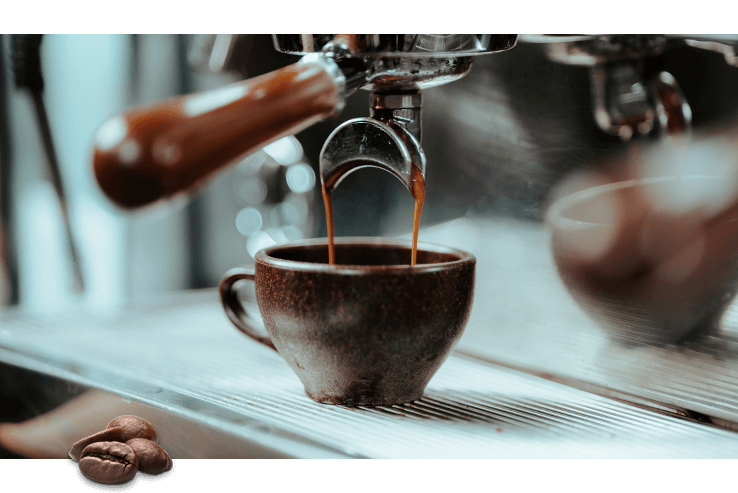Taste the Distinctiveness with Recently Roasted SOE Single Origin Espresso
Wiki Article
Coffee Beans 101: Every Little Thing You Required to Know Regarding Espresso and Blended Coffee Beans
When it concerns coffee, understanding the subtleties of coffee and mixed beans can change your day-to-day cup. You'll uncover the distinct features of Arabica and Robusta beans, and how each influences flavor and high levels of caffeine material. From the expanding procedure to roasting methods, every step plays a duty in your coffee experience. What makes the ideal mixture? Let's discover the crucial aspects that add to an outstanding mug of coffee.Understanding Coffee Beans: Types and Selections
When diving into the world of coffee, recognizing the types and selections of coffee beans is essential for each enthusiast. You'll primarily come across 2 primary varieties: Arabica and Robusta. Arabica beans are recognized for their smooth, intricate tastes and lower high levels of caffeine web content, making them a favored amongst coffee connoisseurs. On the various other hand, Robusta beans load a strike with a stronger, a lot more bitter preference and higher high levels of caffeine levels, frequently used in espresso blends.Ethiopian Yirgacheffe offers brilliant floral notes, while Colombian beans provide a well-balanced taste profile. By familiarizing on your own with these beans and their flavors, you'll elevate your coffee experience and make even more educated options in your developing trip.
The Expanding Process: From Seed to Bean
When you explore the journey of coffee, it all starts with seed choice techniques that set the structure for quality. From there, cultivation and gathering play crucial roles in ensuring the beans flourish. Processing techniques change those harvested cherries into the coffee beans you love.Seed Option Methods
Selecting the best seeds is important for generating high-grade coffee beans, as it lays the structure for the entire growing procedure. Pay attention to the seed's age and storage conditions, as fresh seeds tend to sprout far better. Think about the illness resistance of various selections, as this can greatly influence your return.Farming and Harvesting
As you support your coffee seeds into flourishing plants, understanding the cultivation and harvesting procedure is crucial for accomplishing the finest flavor and top quality. Beginning by planting your seeds in well-draining soil, preferably in a shaded area to shield them from straight sunlight.When it comes time to harvest, search for ripe cherries, which generally transform a vivid red. Hand-picking is commonly the best approach to assure just the ripest cherries are picked. Timing is necessary; harvesting prematurely or far too late can affect the taste account of your beans. Welcome patience and treatment, as this is where quality starts.
:max_bytes(150000):strip_icc()/__opt__aboutcom__coeus__resources__content_migration__serious_eats__drinks.seriouseats.com__images__20110830-espresso-main-248fa93e7b7644e3baabac416fd2579c.jpg)
Processing Approaches Discussed
Once you have actually collected your coffee cherries, the next crucial action is processing them to transform those vivid fruits right into the beans you'll make. There are two major methods: the damp procedure and the completely dry process. In the dry process, you spread out the cherries out in the sunlight to dry, enabling the fruit to ferment and present distinct flavors to the beans. On the various other hand, the damp procedure involves eliminating the fruit immediately and fermenting the beans in water, leading to a cleaner preference. After processing, the beans are hulled, arranged, and generally dried out once again. Each approach influences the taste account, so trying out both can aid you uncover your favored brew. Comprehending these approaches is crucial to enjoying your coffee experience.Roasting Methods: How Taste Is Established
When it involves roasting coffee beans, understanding roast levels is key to revealing their unique tastes. Each toasting method effects the aroma and enhances the flavor advancement process, giving you a richer coffee experience. Allow's discover just how these variables come with each other to raise your daily mixture.Roast Levels Clarified
Roast levels play a vital role in forming the taste profile of your coffee. By understanding these levels, you can much better select a coffee that matches your preference preferences. Experiment with various roasts to discover which one resonates with you, improving your overall coffee experience and satisfaction.Impact on Fragrance
The roast degree not only affects the taste of your coffee but likewise greatly influences its scent. When you pick a light roast, you'll often see brilliant, floral notes that can make your coffee smell fresh and vivid. As the beans darken, the fragrance changes; a medium roast highlights extra well balanced, caramelized scents, while a dark roast often tends to feature strong, great smoky undertones. Each toasting technique launches different unpredictable substances, shaping exactly how your coffee scents. In addition, the quality of the beans plays an important duty; fresh baked coffee launches more aromatic oils, improving that enticing scent. Pay interest to the roast level-- it's vital to revealing the complete aromatic experience of your brew.Flavor Development Refine
As you explore the flavor growth procedure, you'll discover that roasting methods play a critical function in forming the preference profile of your coffee. The roasting temperature level and time straight influence the level of acidity, sweetness, and resentment of the beans. Light roasts maintain even more of the bean's original flavors, highlighting fruity and floral notes. Tool roasts equilibrium level of acidity and body, offering an all-around flavor. Dark roasts, on the other hand, bring out bold, smoky qualities while reducing the bean's intrinsic qualities. During roasting, chemical responses, like the Maillard reaction and caramelization, change the beans and improve their complexity. Exploring with different roasting degrees can help you locate your excellent mixture, so do not hesitate to taste and discover the rich range of flavors!Espresso vs. Blended Coffee: Trick Differences
Espresso and blended coffee each offer one-of-a-kind experiences that deal with different tastes and choices. Espresso is a focused coffee made forcibly warm water through finely-ground coffee beans, leading to a rich, strong flavor and a velvety layer of crema on top. It's often taken pleasure in as a shot or made use of as a base for beverages like lattes and cappuccinos.On the other hand, combined coffee incorporates different beans from various regions, producing a more balanced flavor account. You'll often find blends that highlight acidity, body, or sweet taste, making them functional for different brewing techniques. While coffee focuses on strength, combined coffee might use a more comprehensive range of tastes that can transform with each sip.
Ultimately, your choice between coffee and combined coffee boils down to your personal choice. Whether you long for a fast shock SOE or a leisurely cup, both options have something scrumptious to offer.

Developing Approaches: Unlocking the Perfect Cup
When it comes to developing coffee, locating the right technique can change your experience and elevate your mug. Each brewing strategy has its unique appeal and can significantly impact your coffee's flavor and aroma. As an example, making use of a French press permits you to enjoy a robust and rich brew, while a pour-over approach supplies a tidy, bright cup with distinctive flavors.If you like espresso, purchasing a top quality device can help you understand the art of pulling shots. For convenience, a single-serve pod system supplies speed without giving up preference.
Do not neglect regarding cool brew, which provides a smooth, much less acidic coffee suitable for hot days. Experiment with different methods to discover what reverberates with your taste.
Tasting Notes: Determining Flavor Profiles
Just how can you absolutely value your coffee if you do not know what tastes to search for? Tasting notes are your overview to comprehending the intricate globe of coffee. Pay interest to the preliminary tastes that hit your palate when you drink. You could find fruity notes, like berry or citrus, or probably a nutty touch. As you proceed to taste, notice how the flavors advance-- this is called the "finish." Some coffees might leave a chocolatey or sugar aftertaste, while others may have a brilliant, tidy finish.Take into consideration the body of the coffee, too; is it airy and light or thick and syrupy? Don't neglect level of acidity; a brilliant level of acidity can include life, while a reduced level of acidity may provide a smoother experience. By determining these flavor profiles, you'll strengthen your connection with each cup, making coffee sampling a fascinating trip of discovery.

Tips for Choose and Keeping Coffee Beans
Keeping and picking coffee beans properly can considerably boost your brewing experience. Start by choosing premium beans that fit your taste. Look for freshness; beans roasted within the last two weeks are optimal. Inspect the roast day on the product packaging, and acquire from trustworthy roasters or neighborhood stores.As soon as you have your beans, keep them in a closed container to avoid direct exposure to dampness, light, and air. A dark, trendy area functions best, so avoid keeping them in the fridge or freezer, as this can present dampness. Only grind the amount you require to preserve freshness; entire beans retain taste longer than pre-ground coffee.
Lastly, attempt to use your beans within two to four weeks after opening for peak preference. Adhering to these pointers will assure your coffee stays savory and delightful, raising your day-to-day mixture to new elevations.
Frequently Asked Concerns
How Long Do Coffee Beans Stay Fresh After Roasting?
Coffee beans remain fresh for about two weeks after toasting - SOE. You must save them in an airtight container, away from light and wetness. After that, their taste and scent begin to diminish significantly
Can I Mix Different Coffee Bean Varieties?
Definitely, you can mix various coffee bean ranges! Trying out blends can boost flavors and create a distinct preference account. Just make certain to stabilize the strengths and attributes of each range for the very best outcomes.What Is the Perfect Work Dimension for Coffee?
For coffee, you'll want a fine grind size, regarding the structure of salt. This permits suitable extraction, resulting in an abundant, flavorful shot. Experiment a little bit to find what fits your taste best!Just How Does Altitude Affect Coffee Bean Flavor?
Altitude impacts coffee bean flavor by influencing the development price and chemical structure. Greater altitudes cause slower growth, which boosts level of acidity and intricacy, offering your coffee a special and vivid taste you won't forget.Are There Decaffeinated Variations of Espresso Beans?
Yes, there are decaffeinated variations of coffee beans. You can take pleasure in an abundant espresso flavor without the high levels of caffeine kick. Just seek "decaf" blends at your regional coffee bar or specialty shop.Coffee Beans 101: Whatever You Need to Know Concerning Espresso and Blended Coffee Beans.
When diving right into the world of coffee, recognizing the kinds and selections of coffee beans is vital for every lover.When it comes to roasting coffee beans, understanding roast degrees is vital to exposing their special tastes. Espresso is a focused coffee made by forcing hot water through finely-ground coffee beans, resulting in a rich, strong taste and a luscious layer of crema on top.On the other hand, blended coffee integrates different beans from various areas, creating a much more well balanced taste profile.
Report this wiki page